For the Gorgeous exhibit, a South Asian painting of the infant Krishna was examined to determine if it could be removed from its deteriorated wooden support without risking the thickly painted image layer. An investigation into the materials and methods used to create the painting followed.

This painting comes from the southern Indian region of Tamil Nadu, and has a distinct style and method of construction, often referred to as the “Tanjore school.” A frequent subject of South Indian painting, the infant Krishna is here depicted seated on a throne flanked by two musicians and two herd boys. This style of painting is characterized by vivid colors and extensive gold decoration. Tanjore school paintings have a multi-layered construction including a wooden base panel, a fabric support, a ground layer, and a paint layer embellished with gilding and glazing.
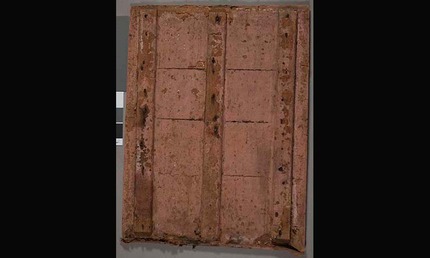
Research into traditional materials and methods was combined with scientific analysis to understand how the painting was constructed. Cotton fabric was lined with paper then wrapped around and pasted to a wooden panel. The fabric was covered with a fine clay ground layer to create a smooth surface for the painting. The artist would then sketch the outline of the painting in ink. The painting was embellished with a gesso-like material to create low relief details, which were then covered in gold leaf and painted with glazes to mimic glittering jewels.

Instrumental analysis was used to better understand what could not be seen with the naked eye. An x-ray showed the structure of the panel and the relative density of the paint layers. Infrared (IR) spectroscopy allowed the conservator to look for the drawing beneath the painting and see where the artist may have changed his composition.
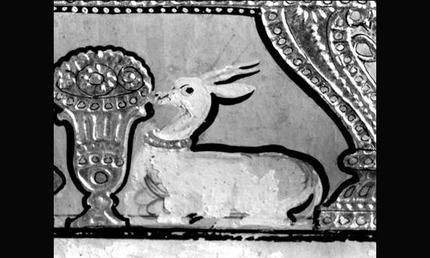

The painting illuminated by UV light showed that many of the painted areas have a coating or glazing. The orange glowing area behind Krishna is characteristic of a shellac coating. X-Ray fluorescence spectroscopy determined the use of vermillion, white lead, chrome yellow, and Prussian blue pigments in the painting.
The wood panel was severely damaged by insects and was no longer structurally sound. It was also risking the painting from beneath, causing breaks and cracks. The painting was adhered to the panel only at the edges and had significantly bulged and distorted in the center. The lower edge of the painting had suffered the greatest losses, as well as mold from water damage.
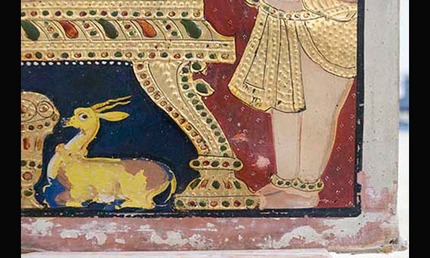
The decision was made to remove the painting from the deteriorated wood panel and attach it to a more stable support. The paint layers were first stabilized, the edges that were attached to the panel were carefully released. Paper margins were then added to the edges of the painting to wrap around the new support.
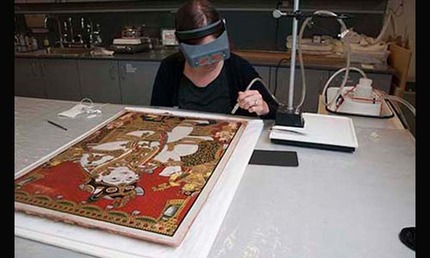


When the painting was released from the panel, it revealed a newspaper attached to the reverse of the painting. The newspaper has a clearly legible date and title, The Times, Wednesday April 29, 1857. We can presume that the painting was made sometime shortly after the date of the newspaper. Curator Forrest McGill searched the Times of London archives and confirmed a match with the newspaper lining the painting. Articles for the day included an account of an insurrection in Sarawak and a discussion of Charlotte Bronte. Attached to the wooden board is a sheet of paper with English-language penmanship practice as well as writing in a South Indian language. It was very exciting to find such a time-capsule enclosed behind a work of art.

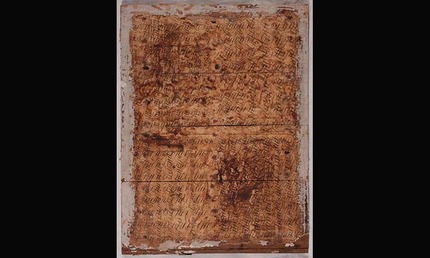
Dallapiccola, A.L. South Indian Paintings: A Catalogue of the British Museum Collection. London: The British Museum Press, 2010.
Vyas, Chintamani and Dr. Daljeet. Paintings of Tanjore and Mysore. Delhi: G.C. Printers, 1988.